
The Atari Jaguar is a home video game console developed by Atari Corporation and released in North America in November 1993. Part of the fifth generation of video game consoles, it competed with the 16-bit Sega Genesis, the Super NES and the 32-bit 3DO Interactive Multiplayer that launched the same year. Powered by two custom 32-bit processors – Tom and Jerry – in addition to a Motorola 68000, Atari marketed it as the world's first 64-bit game system, emphasizing its 64-bit bus used by the blitter. The Jaguar launched with Cybermorph as the pack-in game, which received divisive reviews. The system's library ultimately comprised only 50 licensed games.

Missile Command is a 1980 shoot 'em up arcade video game developed and published by Atari, Inc. and licensed to Sega for Japanese and European releases. It was designed by Dave Theurer, who also designed Atari's vector graphics game Tempest from the same year. The game was released during the Cold War, and the player uses a trackball to defend six cities from intercontinental ballistic missiles by launching anti-ballistic missiles from three bases.

Virtua Racing or V.R. for short, is a Formula One racing video game developed by Sega AM2 and released for arcades in 1992. Virtua Racing was initially a proof-of-concept application for exercising a new 3D graphics platform under development, the "Model 1". The results were so encouraging that Virtua Racing was fully developed into a standalone arcade title.
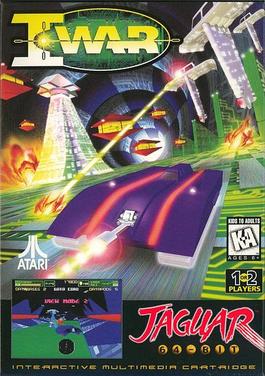
I-War is a 1995 shooter video game developed by Imagitec Design and published by Atari Corporation for the Atari Jaguar. The plot takes place in a futuristic setting where the mainframe supercomputer Override begins to mutate databases and create computer viruses. The player is tasked with piloting an antivirus tank vehicle to eliminate mutated databases and viruses clogging the I-Way network, while recovering data pods and facing off against a variety of enemies.

Batman Forever: The Arcade Game is a beat 'em up video game based on the movie Batman Forever. The subtitle is used to differentiate it from Batman Forever, another beat 'em up published by Acclaim at around the same time. One or two players, playing as Batman and Robin, fight Two-Face, the Riddler, and numerous henchmen.

Fight for Life is a 1996 fighting video game developed and published by Atari Corporation in North America and Europe for the Atari Jaguar. It was the final game to be developed and published by Atari themselves before dropping support for the platform and merging with JT Storage in a reverse takeover on July 30, 1996, and the last fighting title released for the console. Set in a purgatory dimension known as the Specter Zone, Fight for Life follows eight deceased fighters as they enter a tournament held by a shapeshifting being called the Gatekeeper, who will bestow a second chance at life to the winner. Its gameplay consists of one-on-one fights, with a main eight-button configuration, featuring special moves and the ability to customize character's movesets, as well as four different playable modes.
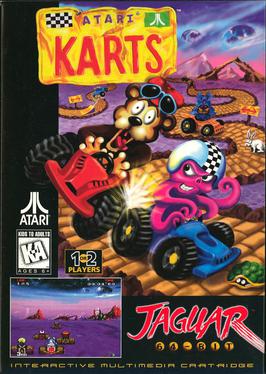
Atari Karts is a kart racing video game developed by Miracle Designs and published by Atari Corporation for the Atari Jaguar in North America on December 22, 1995, and Europe on January 1996. In the game, the players take control of one of several playable characters, each with differing capabilities. One or two players race against computer-controlled characters in four cups consisting of multiple tracks over four difficulty levels. During races, the players can obtain power-ups placed at predetermined points in the tracks and use them to gain an advantage. It plays similarly to Super Mario Kart and features Bentley Bear, main protagonist of the arcade game Crystal Castles (1983).

White Men Can't Jump is a 1995 basketball video game developed by High Voltage Software (HVS) and published by Atari for the Atari Jaguar. It is loosely based on the 1992 20th Century Fox film of the same name. The game features a loose version of basketball known as streetball. It can be played against computer-controlled opponents, or up to four human competitors using the Team Tap multitap.
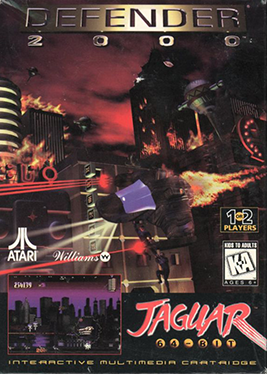
Defender 2000 is a 1996 scrolling shooter video game developed by Llamasoft and published by Atari Corporation for the Atari Jaguar. Part of Atari's 2000 series of arcade game revivals, it is an update of Eugene Jarvis' arcade game Defender (1981). The premise takes place in a future where the Alpha Promixian empire attack mining settlements on distant resource planets. Gameplay is divided into three modes, with the player acting as part of the System Defense Team commanding the Threshold ship to defeat waves of invading aliens while protecting humans.
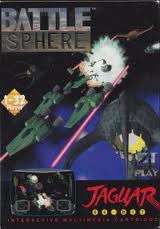
BattleSphere is a space combat simulation video game developed by 4Play for the Atari Jaguar. The game was released in 2000, with the enhanced edition BattleSphere Gold released in 2002. Set during a future war between seven alien races, the factions agree to confine their hostilities to a tournament with the galaxy at stake. Gameplay consists of five modes, each featuring distinct scenarios and objectives. Up to 16 players can participate in a deathmatch mode via local area network (LAN) play.
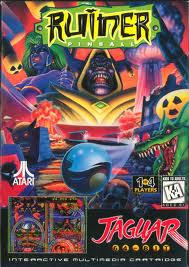
Ruiner Pinball is a 1995 pinball video game developed by High Voltage Software (HVS) and published by Atari Corporation for the Atari Jaguar. The game features two different pinball tables: the nuclear war-inspired Ruiner, and the medieval-themed Tower. Each table contains targets for the player to hit with the ball, increasing their score before the ball is lost. It was marketed as the first title to support the ProController, a redesigned Jaguar controller that added three more face buttons and two triggers.

Virtuality was a range of virtual reality machines produced by Virtuality Group, and found in video arcades in the early 1990s. The machines delivered real-time VR gaming via a stereoscopic VR headset, joysticks, tracking devices and networked units for a multi-player experience.

Cyber Sled is a vehicular combat video game developed and published by Namco. It was originally released for arcades in 1993. The game's perspective is third-person by default, but can be switched to a first-person perspective. The game was nominated for Most Innovative New Technology at the 1994 AMOA Awards. It later received a sequel in 1994, Cyber Commando.

Club Drive is a 1994 racing simulation video game developed and published by Atari Corporation for the Atari Jaguar. The premise takes place in 2098 at the Club Drive amusement park, where driving became legalized after being deemed illegal for safety reasons years prior due to the invention of indestructible vehicles which allowed the ban to be lifted. Gameplay consists of three modes for one or two players, each with their own adjustable ruleset.

Super Burnout is a motorcycle racing video game developed by French studio Shen Technologies SARL and co-published by Atari Corporation and Virtual Xperience exclusively for the Atari Jaguar in North America and Europe in July 1995. It was also published in Japan by Messe Sansao during the same period. It is the first title to be created by Shen Technologies.

Supercross 3D is an off-road motorcycle racing video game developed by Tiertex Design Studios and published by Atari Corporation exclusively for the Atari Jaguar first in North America on December 15, 1995 and later in Europe on December 20 of the same year. Themed around motocross, the players compete in races across fourteen cities of United States such as San Jose, Dallas, Orlando, Florida, Indianapolis, Atlanta and Seattle.

Skyhammer is a shooter video game developed by Rebellion Developments and published by Songbird Productions for the Atari Jaguar on May 22, 2000. Its gameplay style is reminiscent of Psygnosis' G-Police for the PlayStation, which was released three years prior to the game.

Zone Hunter is a virtual reality first-person rail shooter video game developed and published in conjunction by Taito and Virtuality in 1994 for arcades, though the former is not credited in-game.
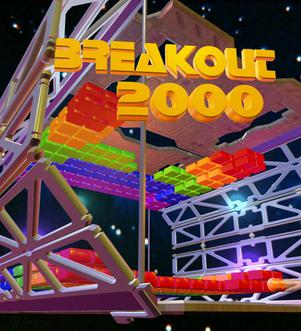
Breakout 2000 is a 1996 action video game developed by MP Games and published by Telegames for the Atari Jaguar. Part of the 2000 series by Atari Corporation, it is a remake of the arcade game Breakout (1976), and one of the last officially licensed releases for the platform. Featuring a similar premise to Breakout, the player must destroy a layer of brick lines by repeatedly bouncing a ball spawned off a paddle into them and keep it in play. Gameplay modifications to the original game include a third-person perspective behind the paddle in a pseudo-3D playfield, power-ups, bonus levels, enemies, varying level designs, and multiplayer features.























